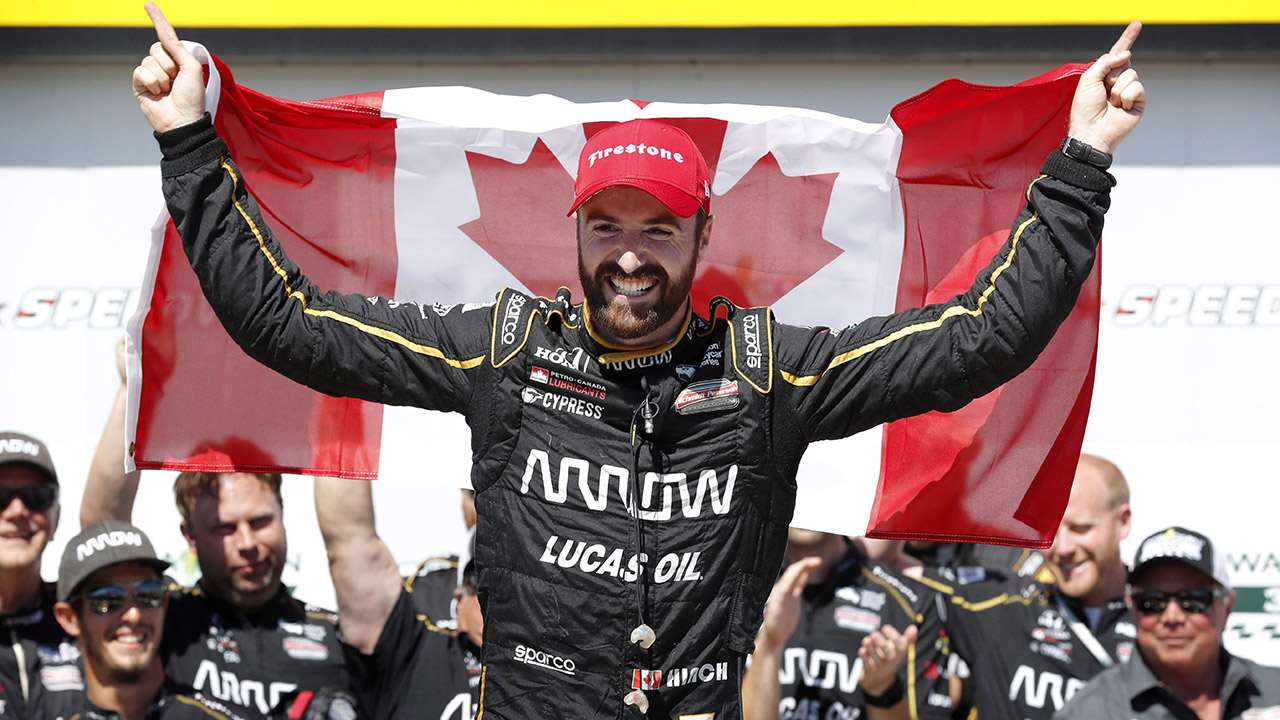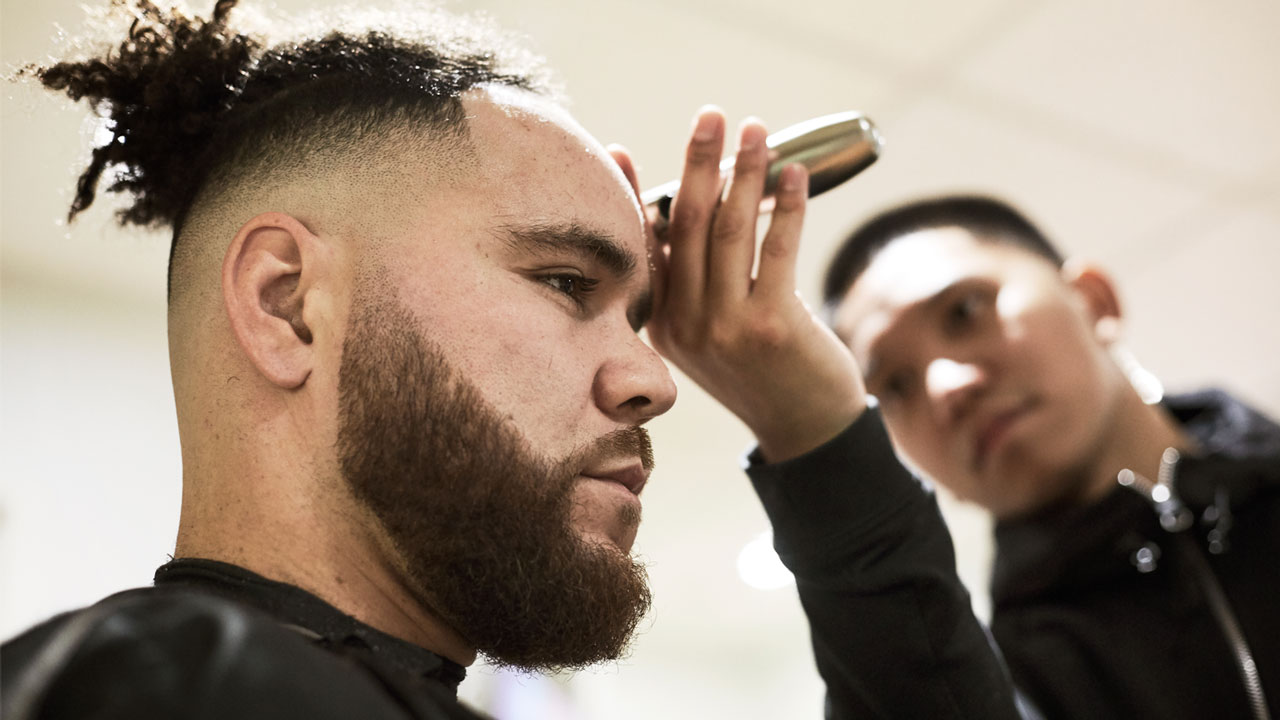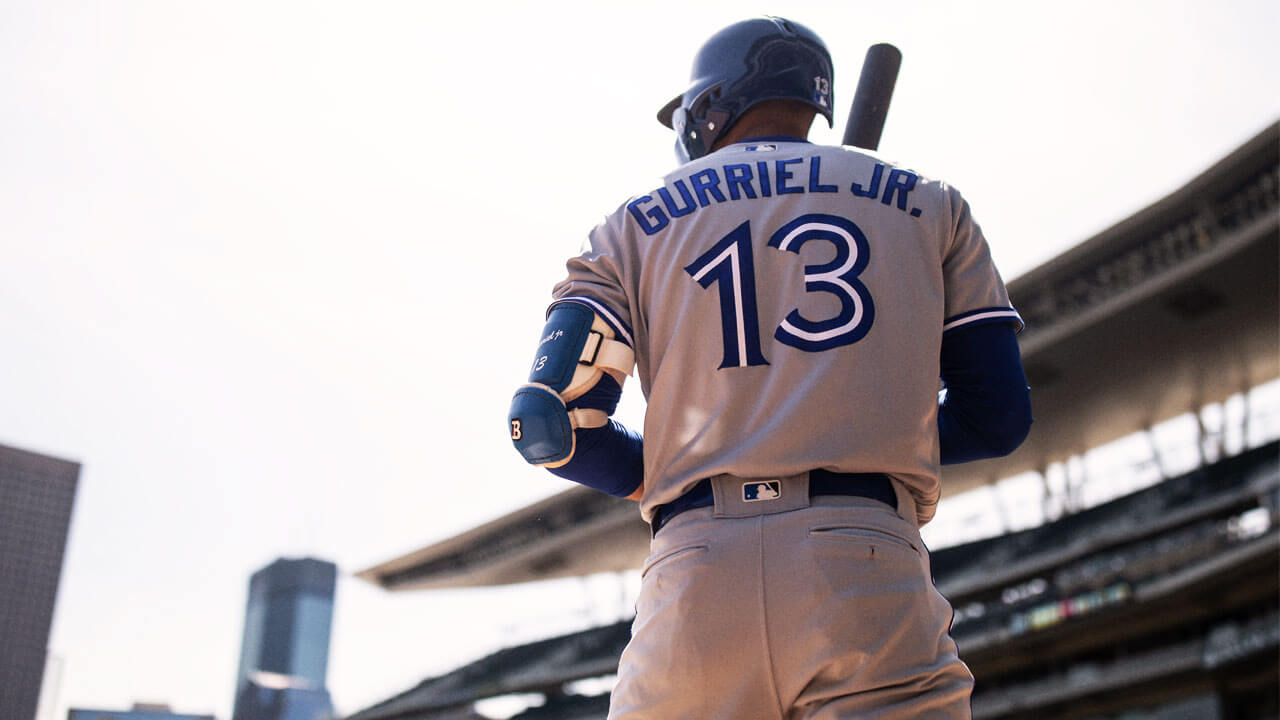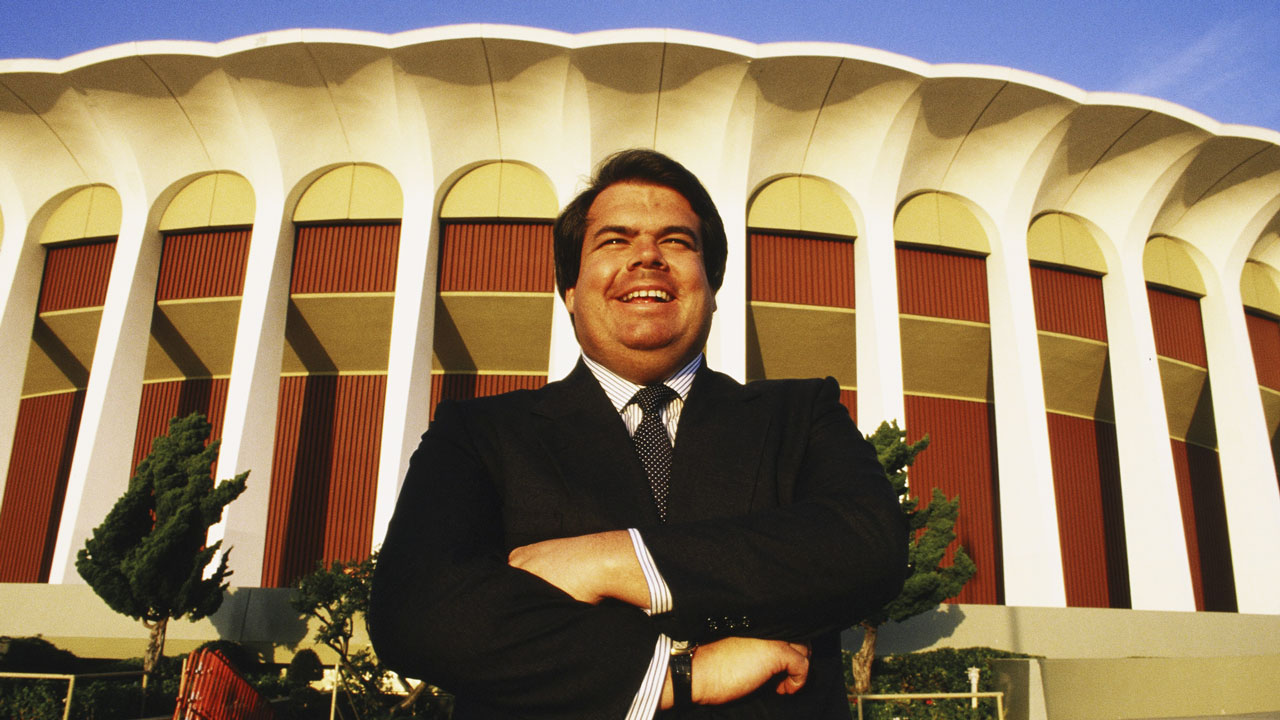A stack of four Firestones is the perfect leaning perch for Bob Perona as, eyes narrowed with focus, he talks to one of the most refined driving minds on the Verizon IndyCar Series. As Perona gets going, Robert Wickens ditches his lunch of salmon and grilled veg on rice and flips his attention back to racing. It’s Friday of an early-June double-header race weekend in Detroit and the Schmidt Peterson Motorsports garage — basically, a big tent attached to a trailer — is set up on Belle Isle, just outside the city. Inside, Wickens’s maroon, No. 6 single-seater is perched on a cylinder jack beside teammate James Hinchcliffe’s car. As he resets between morning and afternoon practice sessions, Wickens and Perona, SPM’s drivers coach, break down the approach to Turn 3 on the 2.63-mile course.
In a sport that was measuring and quantifying the smallest of details decades before the term ‘analytics’ was popularized, feel and the eye test still have a home. Part of Perona’s job is to watch the corners to see what he can glean from the way cars enter and exit. Wickens, too, is relied on to communicate what his body tells him about how the vehicle is behaving and, thanks to his experience racing a variety of cars on multiple continents, there may not be a driver in the world with more finely tuned senses than the 29-year-old Canadian. Dealing with new machinery once again as an Indy freshman, Wickens — known to demand the best from himself and those around him — has offered critical input to Perona and the SPM staff. He’s even occasionally kicked in a valuable two cents when they’re struggling to nail a tweak to Hinchcliffe’s car. “The route he’s gone has allowed him to work at a very high level,” says Canadian and former IndyCar driver Paul Tracy, now a race analyst with NBCSN. “He doesn’t really have any experience in IndyCar, but he seems to be able to get his car where he wants it pretty quickly, going to tracks he doesn’t even know that well.”
Adjusting on the fly while trying to get from A to B has been constant theme for Wickens. As a teenager, he took off for Europe in pursuit of his Formula 1 dream. Roughly a decade later, he’s back in North America, on the verge of earning the domestic recognition he both craves and deserves. While there have been frustrating moments during his debut IndyCar season, Wickens’s showings have established a clear consensus in the pits and grandstands that the near future will outstrip his already impressive here and now. His patience for the payoff has surely been tested, but nothing is going to deter a competitor so fixated on owning the podium.
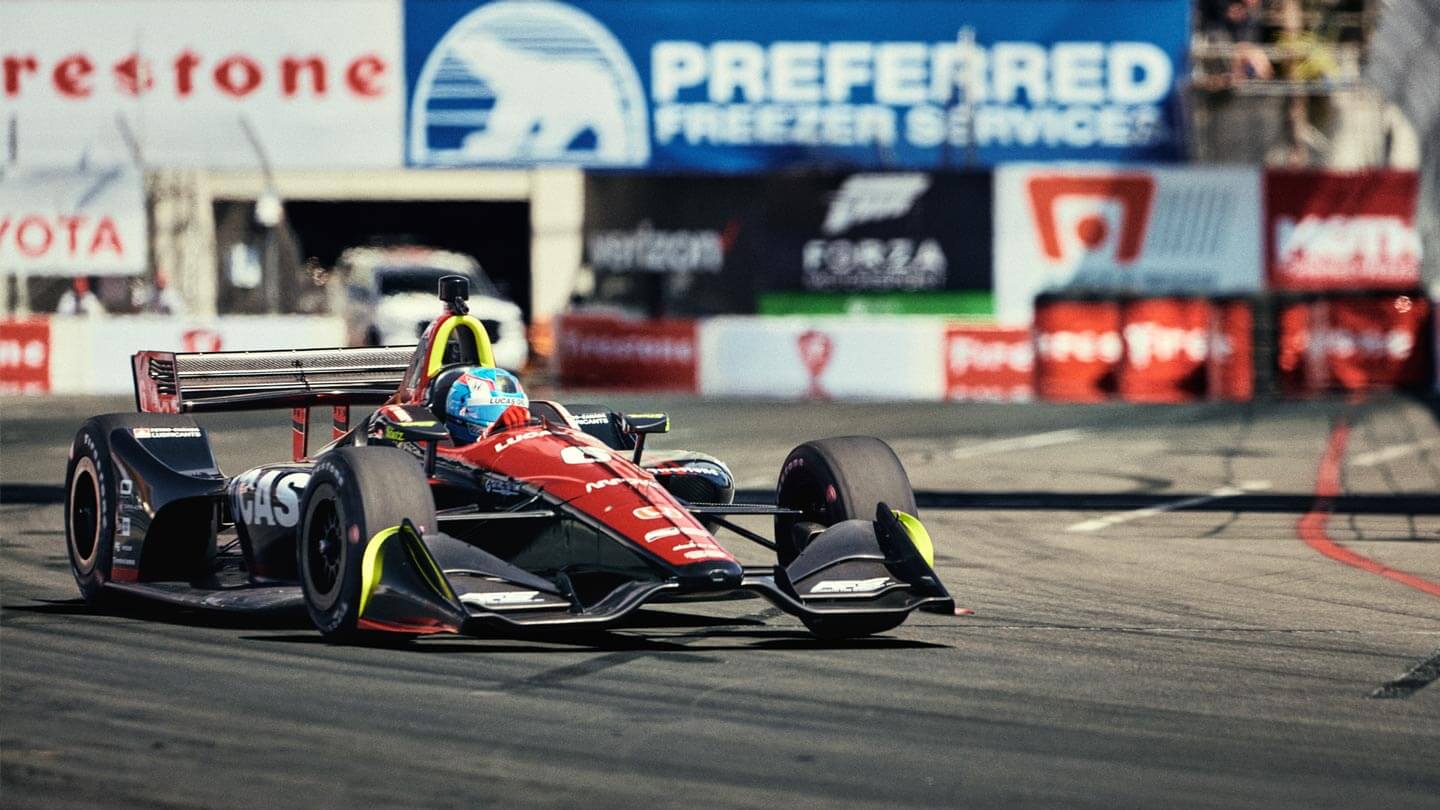
Tim and Lise Wickens were lucky to have sons who not only dove headfirst into an activity, but who had complimentary interests within that discipline. Trevor, Wickens’s older brother, has also carved out a life in motorsport, operating the Hamilton-based kart squad Prime Powerteam. The boys got their first kart when Robert was seven and Trevor was 12. “The family plan was we each try it for a year, [then] sell it and move on to a new sport,” Wickens says.
Long before the kart was acquired, racing had piqued Wickens’s curiosity. He cried a lot as a toddler but, according to family lore, quieted down when there was a race on TV, mesmerized by the action. As a bit of an experiment, his parents bought a copy of the Tom Cruise NASCAR flick Days of Thunder and played it on a loop. “As I was getting older, my grandparents made me an edit that had all the sex scenes out of it — it was just the racing,” Wickens says with a chuckle.
Lise drove a school bus route near the family home in Guelph, Ont., when Wickens was a kid. He often bounced along with mom, and his interest in racing got a major boost the day he met a fellow passenger with a kart. He and Trevor lobbied for and got a kart of their own, and by the time they’d spent a summer behind the wheel at the Waterloo Regional Kart Club, it was clear the sport had tapped into different parts of their souls: Robert came alive in the cockpit, while Trevor thrived with tools in his hands. It was really just a continuation of the way things had been trending on carpets and couches for years: “I’d be building the Lego cars and he’d be the one driving the cars and smashing them, and I’d fix them again,” Trevor says. “It’s kind of how we’ve always been.”
The boys’ passion was an expensive one. Tim, a mechanic who worked on large machines, began taking on regular overtime shifts; Trevor poured dollars earned from part-time jobs back into the kart; grandparents kicked in dough; and Lise did everything imaginable to keep their thinly stretched household running. The Wickens also hustled for sponsorship money and worked hard to maintain those relationships as Robert rose through the ranks and costs increased. To make attending signature events as far away as the southern United States possible, the family bought a motorhome. When Trevor was still too young to drive but old enough to prepare hot dogs for dinner, the boys would hop in the motorhome with Tim, while Lise followed behind in the family car. Upon arriving at one of the tracks in the vicinity of their house, the parents headed home for the work week, while Trevor and Robert stayed for days on their summer break, tracing the contours of the circuit over and over. And this involved far more than dumping gas in the kart and letting fly. The Wickens boys used then state-of-the-art data systems to test every last component of the machine. “It taught me tons about how the go-kart works and, of course, it taught Robert how to be a good test driver and give good and accurate feedback,” Trevor says. “We didn’t really know what we were shooting for back then, we were just trying to win the next race.”

At Schmidt Peterson’s temporary headquarters in Detroit, there’s an understanding that victories must come in spite of some inequality. While IndyCar boasts competitive balance relative to the class-stricken Formula 1 circuit, an outfit like SPM can still be outspent. Wickens refers to SPM as “small but mighty” and the ability to compete for wins and podiums was a big part of what lured him back to North America.
Incredibly, Wickens looked set to spray champagne at his first Indy race in March. He was in the lead with two laps to go when the latest of a couple full-course cautions at the Firestone Grand Prix of St. Petersburg bunched the cars back up. After the restart, Andretti Autosport’s Alexander Rossi tried to slip past Wickens on Turn 1. Their cars touched and the contact knocked the latter out of the race, leaving an exacerbated Wickens to mutter, “You’ve got to be f—ing joking” on the team radio.
[snippet ID=4071101]
While that incident had Wickens shaking his head, the rest of IndyCar marveled at what he did his next time on the track. One major distinction between IndyCar and the formulas Wickens competed on in Europe is the presence of oval tracks. Hinchcliffe says the differences between street courses and ovals are analogous to those between skiing and snowboarding: Sure, you’re flying down a snow-covered mountain, but that’s where the similarities end. The second stop of the Indy season, at ISM Raceway in Phoenix, Ariz., saw Wickens once again leading the race deep into the proceedings. He ultimately took second place. The performance cemented his reputation as an exceptionally nimble driver who can adapt to any scenario involving horsepower and steering. “The Phoenix weekend, in general, was one of the most impressive oval debuts we’ve seen since Nigel Mansell [an English Formula 1 world champion who won four oval races in 1993 as a newbie in North America],” says Hinchcliffe. “It was just a helluva performance.”
Showings like that make it easy to believe Wickens could pile up new fans in a hurry. However, when a young supporter shows up to SPM’s Detroit garage with a still-in-the-box model car, it’s not a facsimile of Wickens’s 2018 ride, but rather the vehicle he piloted four years ago. Without saying a word, the kid passes the car to a crew member, who hands it to Wickens for a kiss from the Sharpie. Before signing his name, Wickens’s voice rises as he belts out a sentence in German. The supporter, after getting his even-more-prized possession back, gives a wave as he walks away. Later, Wickens translates his reaction: “My DTM car!”
From 2012 through 2017, Wickens raced touring cars on the popular Deutsche Tourenwagen Masters series in Germany. It was the final chapter of a career on that continent which — had the world been more of a meritocracy — could easily have seen Wickens roll onto the planet’s most glamorous grid. “He was one of the guys who, I think, slipped through the cracks in terms of having an F1 opportunity with a competitive team,” says Rossi, a friend when the two aren’t clanking cars. “If he had had the opportunity, he’d be winning [F1] Grands Prix.”
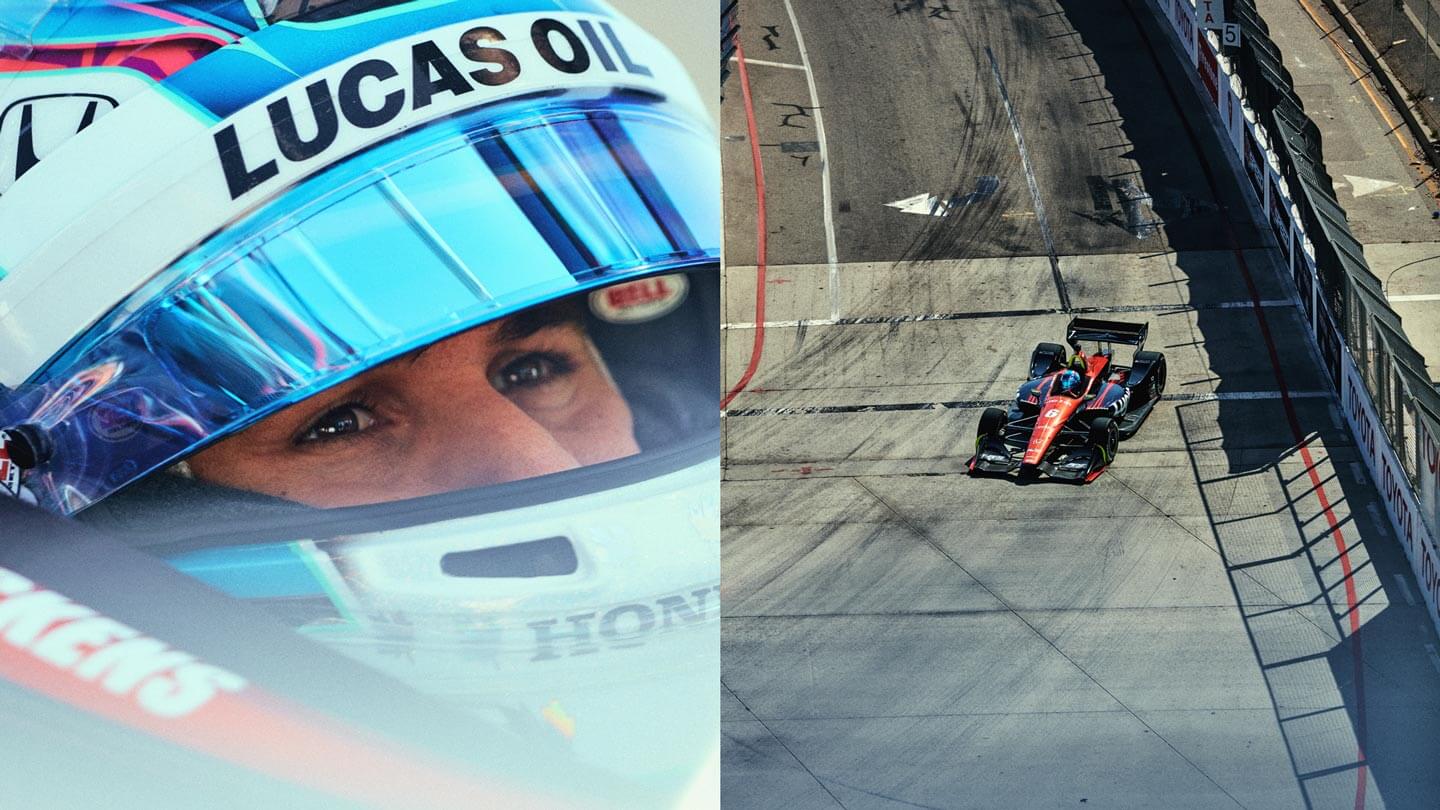
After showing what he could do in karts, a 16-year-old Wickens made the jump to cars in 2005 and won the Formula BMW USA championship as a series sophomore in 2006. He was picked up by Red Bull, which provided the financial backing he needed to commit to European racing in 2008. In his second full-time campaign overseas, Wickens finished runner-up in Formula 2 on the strength of two wins, six podiums and five poles. But that wasn’t good enough for Red Bull, which unceremoniously dropped him from its program. “The week after I was released from Red Bull, it was kinda that reality check like, ‘Shit, this could be it,’” he says.
Despite the setback, Wickens pressed on. In 2010, the money required to keep the engine running came from Canadian businessman Teddy Yip Jr., whose father owned the Theodore Racing F1 team that operated in the late 1970s and early ’80s. Wickens taught driving lessons to pay the rent and slept in hostels on the road while many well-heeled competitors in a sport renowned for attracting exorbitant wealth stayed in five-star hotels during race weekends. In 2011, he beat out the likes of Rossi, Aussie Daniel Ricciardo — a driver who now has seven F1 wins on his resume — and a handful of other top up-and-comers to claim the Formula Renault 3.5 series title, an accomplishment comparable to potting 50 goals as a prospect in the American Hockey League. He was also a reserve and test driver for the F1 team Marussia Virgin Racing that summer and was more or less locked in to compete in Formula 1 in 2012 until Marussia passed him over at the 11th hour in favour of Charles Pic, a Frenchman from a well-to-do family who could bring a small fortune to the seat. “Unfortunately, in the motorsports world, it’s a tale as old as time,” says Hinchcliffe. “Robbie is far from the first guy who [was qualified] to get a crack at an F1 ride and was overturned by politics or money or both.”
That winter, Mercedes-Benz came calling with an offer to race in DTM. Wickens had other Formula 1 options, but they were with back-marking squads that represented little in terms of long-range security. At 22 years old, things crystalized for the young man who’d already given so much of himself to racing. “I just thought, do I want to be a driver on the grid or do I want to be a driver competing for wins and championships?” says Wickens. “I was able to go to DTM and get exactly what I wanted: An extremely competitive championship, and I was challenging for podiums [and] wins every weekend. I was there to compete, not just wave at the fans and be another driver.”
He was also sipping espresso in luxurious hospitality suites and, most significantly, collecting a paycheque. Wickens notes that being a Mercedes employee was, technically, his first full-time job. “It was always nice to see that wire transfer,” he says.
In 2014, Wickens purchased a cottage on Pine Lake in the Muskoka region of Ontario, and thanks to the relatively light DTM schedule and the support of Mercedes, he was able to fly home regularly during recent seasons to spend quiet, quality time there. If DTM was the last stop for Wickens, his odyssey could be called a success by most measures — especially considering where it started. “Let’s be honest, a lot of the guys who are coming up through junior [ranks] now, the way racing is, you’re basically getting rides off of what [money] your parents can bring or whatever sponsors your parents can find,” says Tracy. “He found a way to go to Europe and be a factory Mercedes driver and be paid very well.”
Wickens’s German adventure took a turn last summer when Mercedes announced it would be leaving DTM in favour of the all-electric series, Formula E. Wickens, like Hinchcliffe, was reared on IndyCar and grew up idolizing the late Canadian driver Greg Moore. At one point a couple winters ago, the pair hatched a plan — over rum punches in Turks and Caicos, they think — to do a car swap that eventually came to fruition and saw Hinchcliffe drive Wickens’s closed-cockpit DTM car in Rome, while Wickens got back in a single-seater in Sebring, Fla. With change on the horizon, more wheels started turning for Wickens. “He was very comfortable over there, but there were definitely things that were drawing him back home,” Hinchcliffe says.
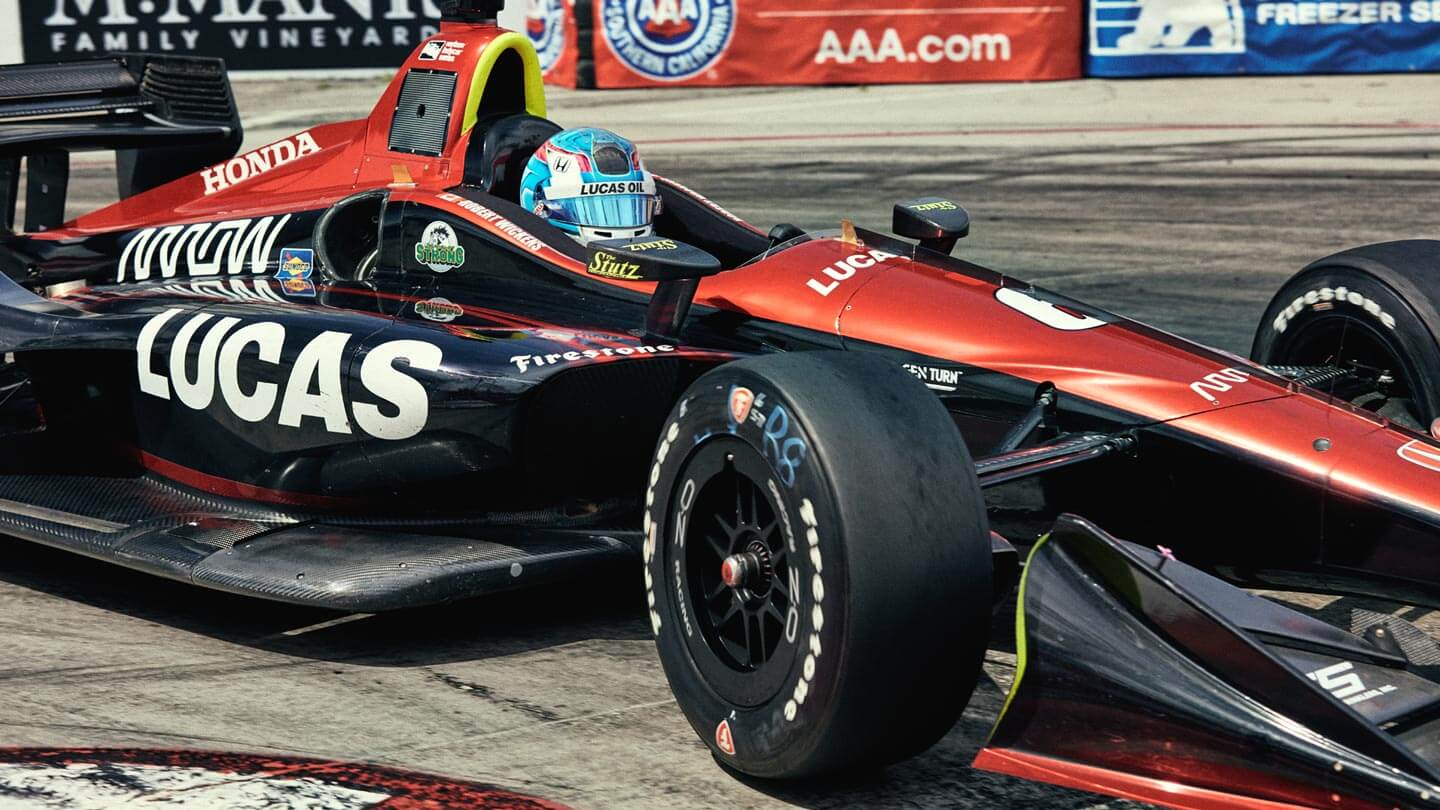
A tugger is the workhorse cousin of the golf cart. It’s basically a small flatbed and, amongst a sea of sexy race cars, it stands out like a lumpy potato someone dug up and chucked in a basket of polished, pristine apples. Typically, it’s used to haul equipment around the garage and pits, but it can also help a team make the term “track walk” less literal. On Thursday evening, with the sun hanging low over the Motor City, more than a half-dozen members of SPM climb onto the bed of the tugger, legs dangling over the side. One is a bit tardy.
“C’mon, Wickens!” Hinchcliffe shouts from the driver’s seat while blasting the horn. Once Wickens lands shotgun, dark grey No. 6 hat on his head, SPM merges onto the circuit, where the drivers and engineers will jump off at various points to discuss things like your best opportunities for passing and where you don’t want to get trapped in traffic. Sessions like this are extra important to Wickens since he’s competing on most IndyCar circuits for the first time. But while business talk rules the day, levity always lurks when Hinchcliffe is around. The backstretch on Belle Isle runs parallel to the Detroit River, where a pair of jet skis are kicking up enough water to make the tugger’s passengers take notice. “You know what they say: Money can’t buy happiness,” begins SPM’s resident ham, teeing up his punch line. “But you can buy a jet ski. And have you ever seen anyone frown on a jet ski?”
Wickens is the first to tell you he’s nowhere near as gregarious as his buddy — it is, after all, a high bar. Those close to him, though, rave about what they see on the other side of the shell. “I think he is inherently a little shy, but he’s got a wicked sense of humour and I’ve seen him ease up and get more comfortable in front of cameras,” says Hinchcliffe.
Keeping his cards close to his vest actually helped Wickens in a realm that is often kind to men of mystery: romance. He and fiancée Karli Woods, a content creator and vlogger, originally connected on Tinder when both were flipping through their phones during layovers at Pearson Airport in 2015. Unfortunately for Wickens, he was flying to Indianapolis to see Hinchcliffe, who had just experienced a life-threatening crash during Indianapolis 500 practice. Following his somewhat melancholic visit to Indy, Wickens returned to Toronto and met Woods face-to-face. When a few dates made it clear there was a spark, she mentioned his seemingly sly approach. “She said, ‘You played it pretty cool,’ but I actually just had other things on my mind,” he says.
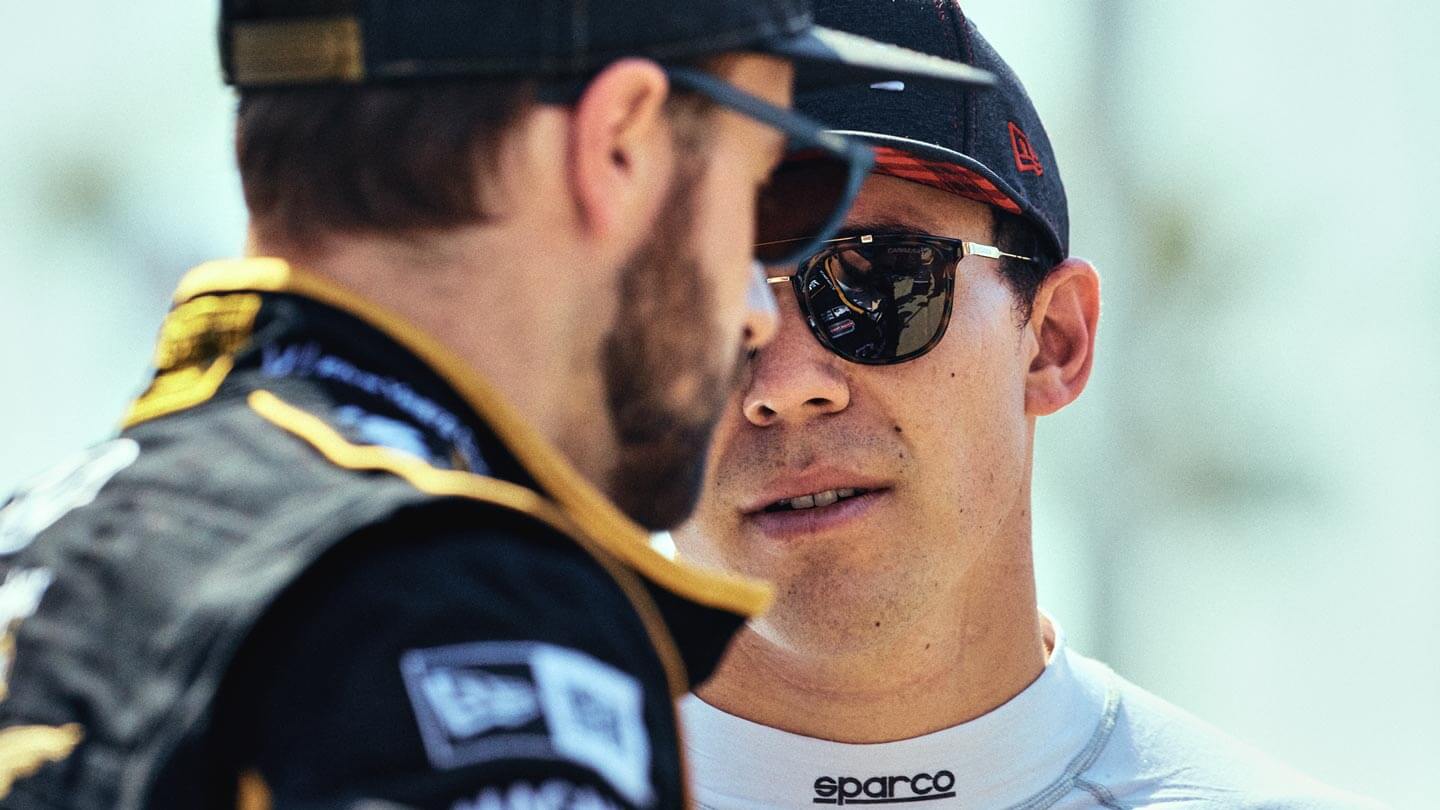
Wickens and Woods paid tribute to the pal who unwittingly brought them together when it came time to name their Yorkie-Maltese mix. They always thought it would be a laugh to give a dog a human name, so “James” was a natural. The couple live just down the road from Hinchcliffe, his partner, Becky Dalton, and their dog, Lucy, in Indianapolis. All four people, minus the furry companions, can be found in the pits during race weekends, some of which occur within driving distance of Indy. “We’ve got walkie-talkies between the cars so we can communicate, because we’re that big of nerds,” Hinchcliffe says.
A ready-made social life is a wonderful bonus for a man who experienced some piercing loneliness in Europe, but Wickens — whom Trevor calls a “perfectionist across the board” — wouldn’t have signed a multi-year deal with SPM if the professional fit wasn’t on-point. On the other side of the contract, it’s safe to say co-owners Sam Schmidt and Ric Peterson are over the moon to have a rookie driver who sits sixth in the points standings after 11 races. Peterson, a Canadian business man, says he had a rival owner approach him at one point and say, “That Wickens guy is pretty good, one of my people told me about him. Now I’m hearing, ‘I told you so.’”
Wickens’ abilities were well known in Europe, where he always performed in front of packed grandstands in DTM. His brother, however, believes there was always another, more personal audience he was anxious to reach. “He’s been racing cars at a high level for a decade and it took [until he was] 29 years old to be properly recognized in North America as a good driver, and I think that always kind of bothered him a little bit,” says Trevor. “Not that he’s ever said the words, but he’s mentioned before, [being] at the mall with James, and James gets spotted and people ask for an autograph and Robert is standing there twiddling his thumbs.
“I think that’s the one driving factor that really motivated him to come back; just for the recognition of being one of the Canadian greats. I think that’s the goal of all athletes, being recognized in your country.”
Any Sunday now could trigger significant growth in that regard for Wickens. When it happens, expect the guy on top of the podium to finally lose his composure.

